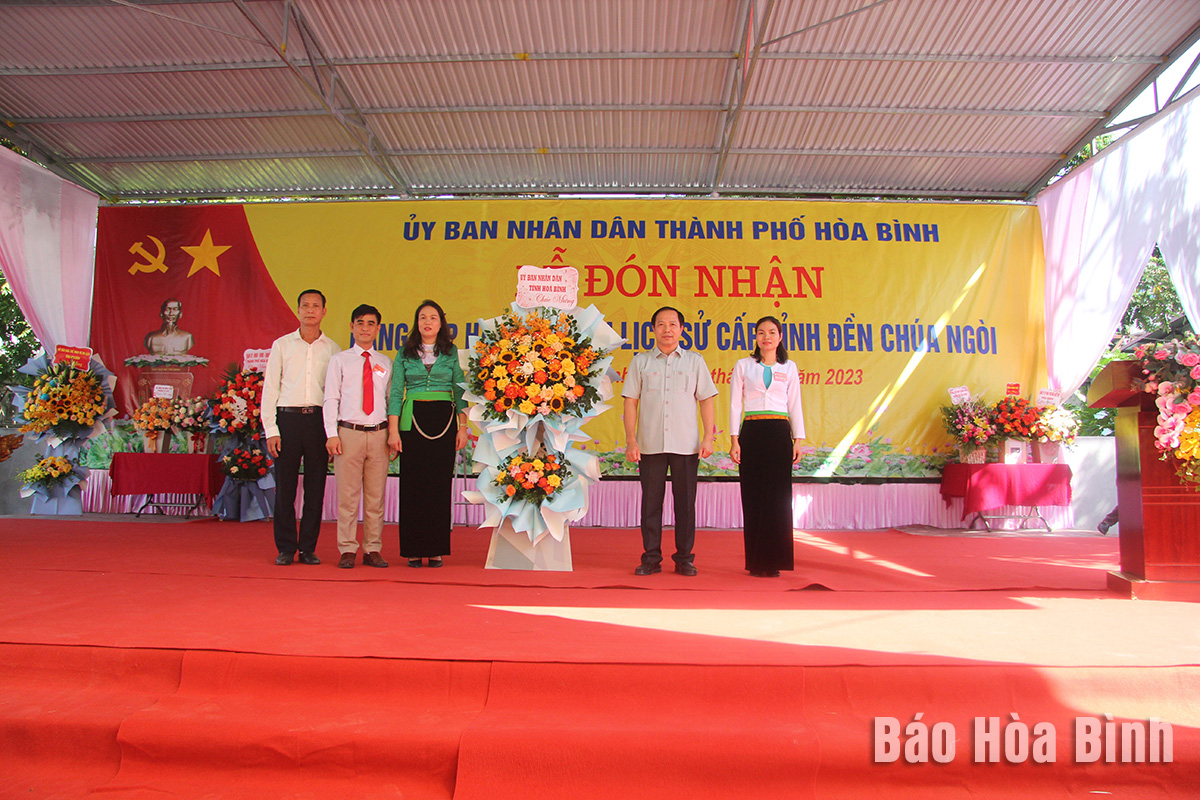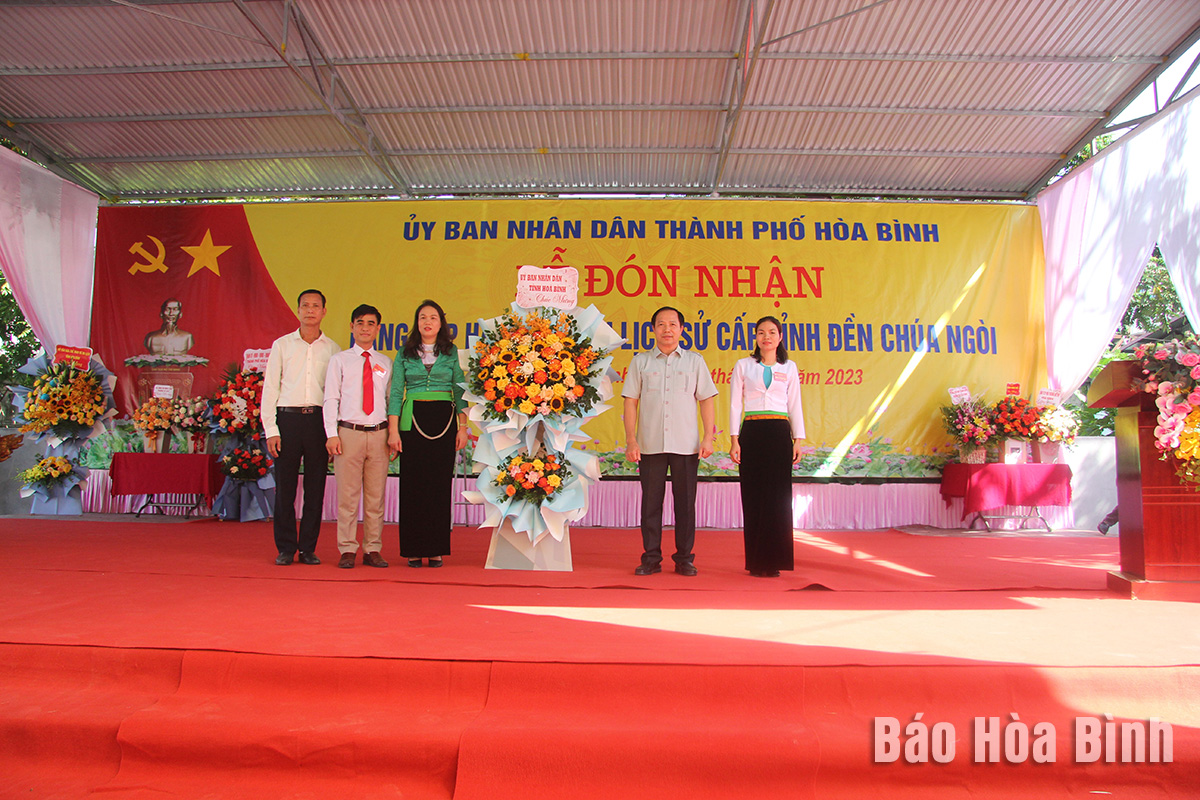
(HBO) - Chua Ngoi Temple in Quynh Lam ward of Hoa Binh city in the province of the same name has been recognised as a provincial historical relic site. The certificate of recognition was handed over to the People’s Committee of Quynh Lam ward at a ceremony on October 3.
Vice Chairman of the provincial People’s Committ![]() ee Nguyen Van Toan presents the certificate of recognition and flowers to a representative of Quynh Lam ward.
ee Nguyen Van Toan presents the certificate of recognition and flowers to a representative of Quynh Lam ward.
The Chua Ngoi Temple was formed and existed in association with the folk cultural beliefs of worshiping Lord Ot, and hero Hung Dao Dai Vuong Tran Quoc Tuan (1228 – 1300), a general with strategic talent and perfect intelligence.
Residents in Quynh Lam ward consider the Chua Ngoi Temple as a place for organising spiritual practice activities.
Every year, on the 10th day of the first lunar month, cultural and religious activities at the Chua Ngoi Temple are organised in accordance with traditional rituals, contributing to preserving and promoting traditional cultural values, meeting spiritual and religious demands of the people, and educating young generations about the historical and cultural values, and traditions of their ancestors.
The recognition serves as an important legal basis and creates favourable conditions for managing, protecting, and promoting the value of the relic site .
With an increasingly vibrant and widespread emulation movement aimed at building cultured residential areas and cultured families, Yen Thuy District has been making steady progress toward improving both the material and spiritual well-being of its people, while fostering a civilized, prosperous, beautiful, and progressive community.
Once lacking recreational spaces and community facilities, Residential Group 2 in Quynh Lam Ward (Hoa Binh City) has recently received attention for the construction of a new, spacious, and fully equipped cultural house. The project followed the model of state support combined with public contributions in both labor and funding.
The "All people unite to build cultural life" movement, which has been effectively integrated with Kim Boi district’s socio-economic development goals, is fostering a lively spirit of emulation across local residential areas, hamlets, villages, public agencies, and enterprises. In addition, through the initiative, traditional cultural values are being preserved and promoted, while community solidarity and mutual support in poverty reduction and economic development are being strengthened.
A working delegation of the Hoa Binh provincial People’s Committee led by its Permanent Vice Chairman Nguyen Van Toan on June 11 inspected the progress of a project to build the Mo Muong Cultural Heritage Conservation Space linked to tourism services in Hop Phong commune, Cao Phong district.
Born and growing in the heroic land of Muong Dong, Dinh Thi Kieu Dung, a resident in Bo town of Kim Boi district, in her childhood was nurtured by the sweet lullabies of her grandmother and mother. These melodies deeply imprinted on her soul, becoming an inseparable part of her love for her ethnic group's culture. For over 20 years, this love for her hometown has driven Dung to research, collect, and pass down the cultural values of the Muong people to future generations.
In the final days of May, the Ethnic Art Troupe of Hoa Binh Province organized performances to serve the people in remote, mountainous, and particularly disadvantaged areas within the province. These were not just ordinary artistic shows, but they were the meaningful journeys aimed at spreading cultural values, enhancing the spiritual life of the people and contributing to the preservation of ethnic minority cultural identities.



